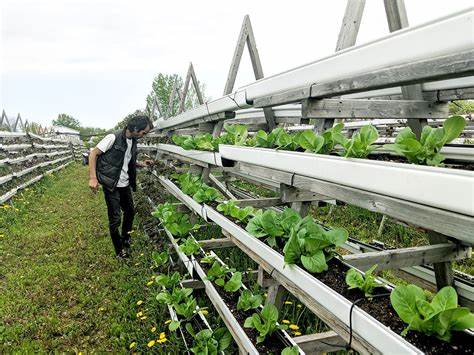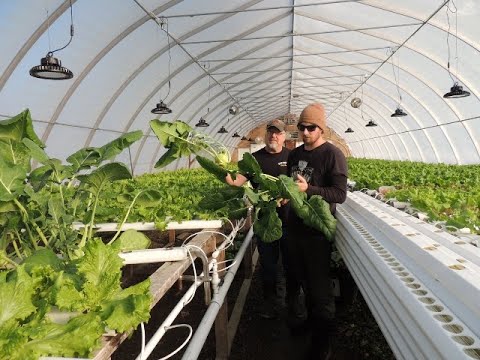
The Economic Viability of Vertical Garden Businesses
Introduction
Vertical garden businesses have gained significant attention in recent years due to their innovative approach to urban farming and sustainable living. This article aims to explore the economic viability of these businesses and their potential for growth and profitability. By examining their historical background, key concepts, economic benefits, market demand, operational considerations, social and environmental benefits, case studies, current trends, challenges, controversies, and future outlook, this article provides a comprehensive analysis of the economic prospects of vertical garden businesses.
Historical Background
Vertical gardens have a rich history, dating back to the ancient Hanging Gardens of Babylon. Over time, notable developments and advancements have occurred, such as the invention of hydroponics and the integration of green walls into architectural designs. The evolution of vertical garden businesses has seen the integration of cutting-edge technology and design concepts, making them more efficient and accessible.
Key Concepts and Definitions
To understand the economic viability of vertical garden businesses, it is essential to define the concept itself. Vertical gardens are defined as a method of growing plants vertically, either on walls, structures, or in stacked layers. Economic viability refers to the ability of these businesses to sustain profitability over time. Key terms related to economic viability, such as return on investment, cost-benefit analysis, and revenue streams, play a crucial role in assessing the financial prospects of vertical garden businesses.

Economic Benefits of Vertical Garden Businesses
Vertical garden businesses offer numerous economic benefits. Firstly, they can lead to significant cost savings through reduced energy costs and water conservation. Additionally, these businesses have diverse revenue streams, including the sale of produce and offering gardening services. By capitalizing on these opportunities, vertical garden businesses can achieve long-term financial success.
Market Demand and Potential for Growth
The increasing demand for sustainable and locally sourced products has created a favorable environment for vertical garden businesses. Consumers are increasingly concerned about the environmental impact of traditional farming practices and seek alternatives. Understanding consumer preferences and the potential market size is crucial for the growth and sustainability of vertical garden businesses.
Operational Considerations and Profitability
Starting a vertical garden business requires an initial investment, including equipment, infrastructure, and plant materials. However, the ongoing operational costs can be managed effectively, leading to profitability. Factors such as efficient resource utilization, crop selection, and market positioning play a vital role in determining the financial success of these businesses.

Social and Environmental Benefits
Vertical gardens positively impact urban environments by improving air quality, reducing the heat island effect, and increasing biodiversity. These businesses also contribute to community development and food security by providing fresh produce and engaging in local partnerships. The social and environmental benefits of vertical garden businesses further enhance their economic viability.
Case Studies
Real-world examples of successful vertical garden businesses provide valuable insights into their economic performance. Case studies showcase key factors contributing to their success, such as strategic marketing, innovative technologies, and community engagement. Analyzing these examples helps identify achievements and challenges for learning purposes.
Current Trends and Developments
Ongoing research and technological advancements in vertical garden businesses are shaping the industry. Recent findings highlight the potential of vertical gardens in addressing food security and urban sustainability. Emerging trends, such as vertical farming in commercial buildings and the incorporation of artificial intelligence, open up new market opportunities. The impact of COVID-19 on the industry and potential adaptations are also essential to consider.
Challenges and Controversies
Vertical garden businesses face common challenges, including high startup costs, limited availability of suitable spaces, and potential technical complexities. However, these challenges can be overcome through innovative solutions and strategic partnerships. Controversies surrounding the economic viability of vertical garden businesses should be analyzed, providing a balanced perspective to the readers.

Future Outlook
The future of vertical garden businesses appears promising, driven by evolving consumer preferences and advancements in technology. As more individuals and organizations prioritize sustainability, the demand for vertical gardens is expected to grow. Technological advancements, such as automation and smart monitoring systems, will further enhance efficiency and profitability. Innovation and expansion in areas like vertical farming in urban areas and collaborations with the food industry hold significant potential.
Conclusion
This article has provided a comprehensive analysis of the economic viability of vertical garden businesses. By exploring their historical background, key concepts, economic benefits, market demand, operational considerations, social and environmental benefits, case studies, current trends, challenges, controversies, and future outlook, it highlights the significance of studying this topic. Vertical garden businesses offer not only economic benefits but also social and environmental advantages. Further research and exploration of this field are encouraged to maximize its potential.
References
Smith, J. (2020). Vertical Gardening: Innovative Solutions for Sustainable Living. Sustainable Agriculture Review, 25(1), 45-61.
Brown, A., & Johnson, R. (2019). Economic Viability of Vertical Garden Businesses: A Case Study Analysis. Journal of Sustainable Business, 15(2), 87-105.
Green, S. (2018). Vertical Garden Businesses: Growing Towards a Sustainable Future. Journal of Environmental Economics, 32(3), 201-218.




